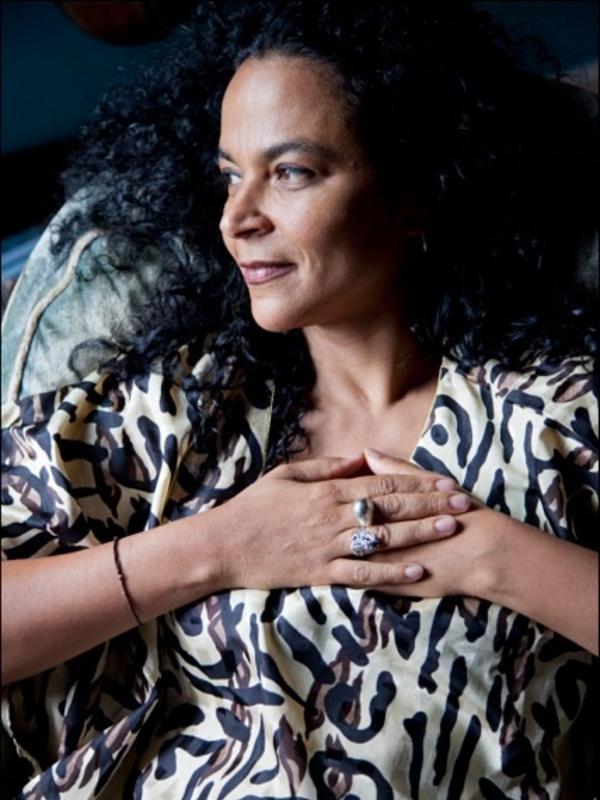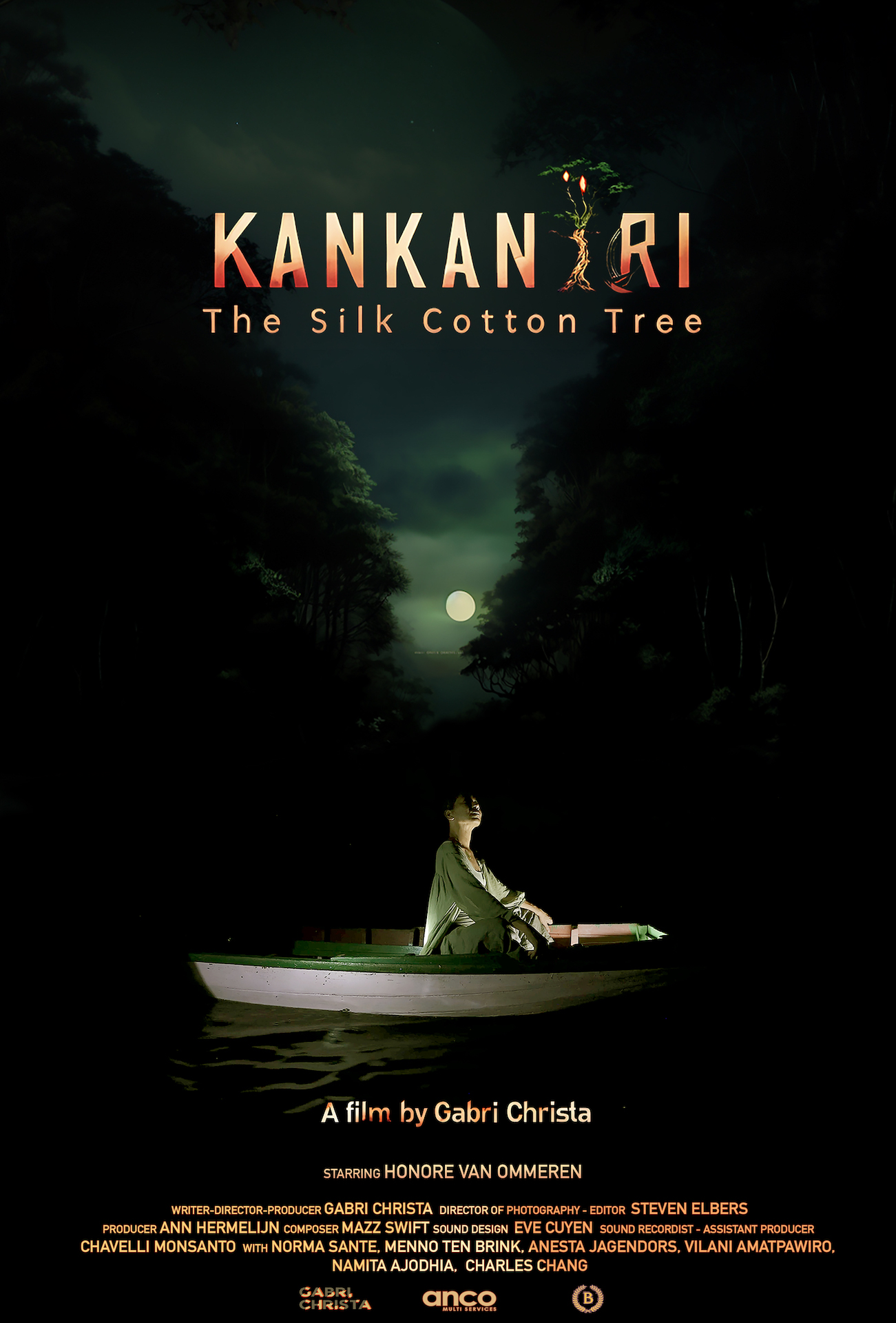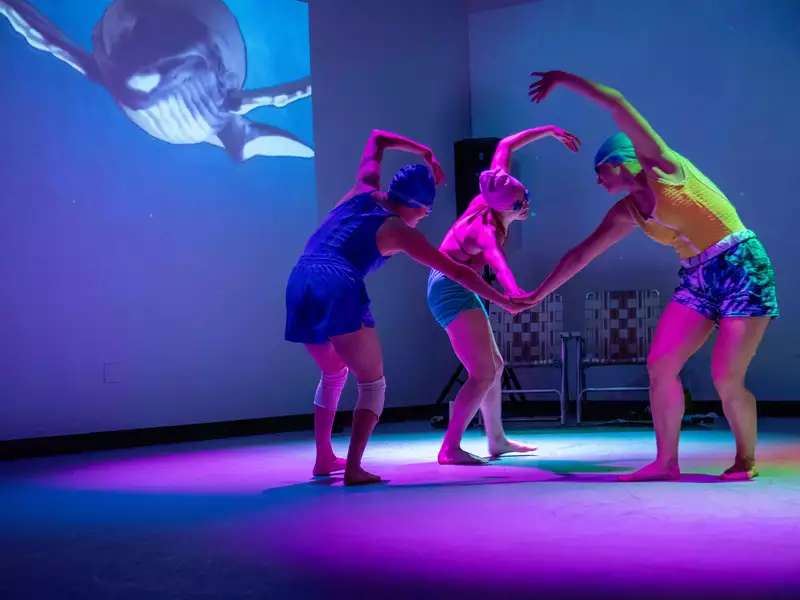Gabri Christa — award-winning choreographer, dancer, filmmaker, director of Barnard’s Movement Lab, and associate professor of professional practice — is no stranger to earning numerous accolades. Her choreographies, which have been presented around the world, have led to her receiving a Guggenheim fellowship and five Jerome Foundation grants, being named one of the World’s 100 Most Promising Filmmakers by the Pangea Day Festival, and being honored with an outstanding career achievement award by Dance Camera West.
In her latest film, KANKANTRI: The Silk Cotton Tree, Christa merges dance and film to create immersive works that are as mesmerizing as they are meaningful. The film — which follows a woman’s journey of spiritual discovery as she connects with her ancestors through dance and rituals until she feels whole — had its world premiere on March 23, 2024, at the Cinedans Film Festival in Amsterdam and was nominated for Best Choreography for Camera at Festival Videodanza de Puerto Rico. On May 16, it opened the Harlem International Film Festival and was hosted by The Forum at Columbia University.
Barnard’s Presidential Research Award supported the film’s production, which was 10 years in the making. “My advice [to artists trying to start something big] is to always make sure it is a project you really have to make [and] that is close to your heart so you can stick with it, care for it, but also find alternative ways to make it [and] adapt it without losing your intention,” said Christa. The film is the latest addition to her another building project — a series of films set in historic sites connected to Dutch colonial history.
Shot in Suriname (formerly Dutch Guiana), KANKANTRI holds great personal significance for Christa, who is of mixed Dutch-Caribbean heritage. She was inspired to start the project upon discovering the extent of her family’s African-Jewish ancestry following a visit to the Neveh Shalom Synagogue in Suriname in 2000.
“In many ways, [KANKANTRI] is autobiographical and reflects my experience of the spirituality in Suriname and my connection to my ancestors,” said Christa.
Below, Christa discussed the making of KANKANTRI, her hopes for the project, and what the film means to her.
Perhaps as a mixed-heritage person, I am fascinated by mixed media because I believe that the power of difference, or different mediums, is where we find a new form.
KANKANTRI centers on a woman’s spiritual journey, through dance, to feel whole. What does it mean to feel whole?
To feel whole means to fully accept all the parts of yourself and your lineage. In the context of the film, it means to make peace [with] and embrace all of yourself, but also all the ancestors and bloodlines inside yourself — even the ones who might be controversial. The sum of those heritages made you who you are and is your strength.
In the case of this film, many of the different people’s immigration was born out of need or out of force. Suriname, formerly Dutch Guiana, was one of the countries with the largest slave plantations. It therefore was deemed more valuable by the Dutch and traded for New Amsterdam (now New York) and later [for] a large part of contract workers imported for labor. To be descendants of those people means also to carry an amount of trauma. However, [with KANKANTRI], I chose to focus on resilience, the dance, and rituals that helped people survive. The woman in the story is — and I am as well — a descendant of survivors. Dance and ritual play a large part in the embracing of self.
Were there times when you thought this project might not make it to the screen?
I tried many times to find funding and have been rejected a few times, but I am not someone who gives up easily. I always knew that I would make it one day, even if I would have to go out alone with my camera and no money. I actually started shooting my own films in the last three years and preparing for that possibility.
What is the most meaningful memory you have of KANKANTRI’s production process?
There are so many memories, but perhaps it is the overall memory that is most meaningful: going into a country I didn’t really know and only using my intuition to get my team together. I returned to Suriname prior to starting preproduction to see if I still wanted to make the film now [that] I had some money and to feel [it out]. I went on a solo trip to the [Jewish plantation community] Jodensavanne. At 6 a.m., I was picked up by a man in a truck, and I thought, “Oh my, what have I done? The place is in the rainforest!”
How did the combination of dance and film work in KANKANTRI?
I approach everything as a dance — dance of the camera and dance of the body on screen. Film is a moving image, and dance is a moving body. They have a lot in common. Film can tell stories dance cannot — dance is more ephemeral. I love the challenge to combine these forms, although [KANKANTRI] is more of an essay film, a hybrid that combines art and documentary. Perhaps as a mixed-heritage person, I am fascinated by mixed media because I believe that the power of difference, or different mediums, is where we find a new form.
What themes run through the another building series, and what sets KANKANTRI apart?
In another building, I give a contemporary response to places connected to Dutch colonial history. KANKANTRI is part of the series. As is the case with my other films, it deals with memory and history, but this film is more complex, has more sites, and is on another level, which brings it outside the genre of “just” dance films. Over the years, [I’ve become] clearer on why I tell a story and how I want to tell [it]. I also do so much research before I even start writing. This film comes out of a very long period of planning and envisioning the smallest details.
What do you hope viewers will take away from the film?
I hope viewers will start thinking about their own heritage and the power of embracing their own history. The film is not didactic, so I hope people will take the journey and feel and see and receive some of the spirituality in it — as well as the beauty of the country and its people. I also hope it will make them curious [to] dig a bit deeper into the places the film takes them. I am all for an open interpretation — there never is a “right” way, so just finding the film to be beautiful and hopeful is enough for me.







